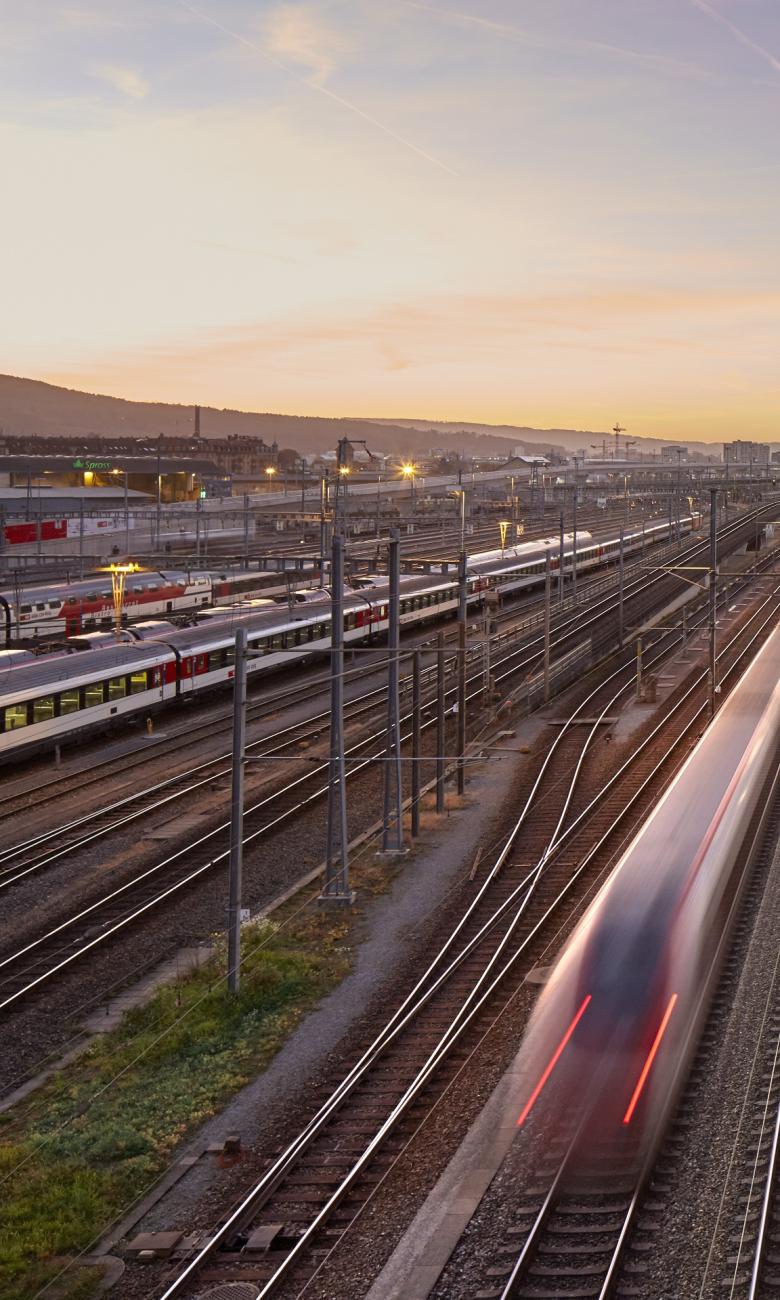Intelligent technology for greater energy efficiency
Tablets for saving electricity? They exist. Thousands of Swiss train drivers are now using tablets with a new innovative software for reducing the electricity consumption of trains. For this innovative solution, the Swiss Federal Railways (SBB) has received the prestigious prize for energy efficiency Watt d’Or of the Federal Office of Energy (FOE).
The Swiss are world champions in train travel! The 2,307km travelled per person per year is equivalent to the trip from Basel to Moscow and back. One 1.2 million people, or almost one seventh of the population of Switzerland, use trains every day. The Swiss railway network is the most intensively used system in the world: More than 10,000 trains run on the 3,100km network per day, with up to 1,000 trains operating at any one time.
It is therefore not surprising that even small delays cause chain reactions on the network and the need for trains to slow down or stop without notice. But it is a problem that getting a train that weighs several thousand tonnes rolling again is extremely energy intensive. Every unscheduled halt costs the SBB a lot of money. The electrified Swiss railway network uses approximately 2,381 gigawatt hours each year, which corresponds to the annual electricity consumption of all households in Zurich, Geneva, Basel, Bern, Winterthur and Lucerne together! The level of consumption is expected to increase by 25 per cent till 2030. In view of this future growth in electricity consumption the SBB has set itself the ambitious target of reducing its electricity consumption while expanding its service. Especially high energy saving potential has been identified with a reduction in unscheduled halts. Thanks to the innovative software 'Adaptive Control(ADL) ' Swiss trains will now be "intelligently" driven. ADL is part of the SBB 'Rail Control System (RCS) ' system for train traffic management.

ADL recognises conflicts in train movements and calculates the optimum speed and sends this to a tablet used by the train driver. The “green wave”/ADL enables train drivers to drive smoothly by avoiding unnecessary stops. This improves energy efficiency, reduces wear and tear on the rolling stock and lines and cuts energy costs.. For example, a freight train weighing 1,000 tonnes takes as much energy to go from 80 km/h to a standstill and start back up again as a household uses in a week. This means that the potential for saving energy is especially high in freight services.
Thanks to ADL, SBB optimises every tenth train and saves approximately 115,000 kilowatt hours per day. Long term the SBB aims to reduce electricity consumption using ADL by 72 gigawatt hours, which corresponds to the consumption of all households in the city of Fribourg (of 36,000 residents) in one year. This will reduce the SBB's annual electricity bill by more than CHF 8 million.
ADL, which was developed by the SBB, is a very innovative solution, which was awarded with the Watt d’Or energy prize of the Federal Office of Energy (FOE) in the category for energy- efficient mobility. This shows that innovation is not the sole preserve of ambitious start-ups. Even a 104-year-old state-owned company can develop new, innovative solutions for saving electricity and money.
Philippe Gauderon, head of SBB Infrastructure: "ADL is part of the digital transformation process of the SBB that is currently under way. It is the key to mobility in the future and offers the SBB and its customers opportunities that we want to exploit to the full."
Railway companies in other countries are also interested in this SBB development. It is therefore possible that in the near future train drivers throughout Europe will be consulting their tablets to find out the optimal speed at which they should be travelling to save electricity.




